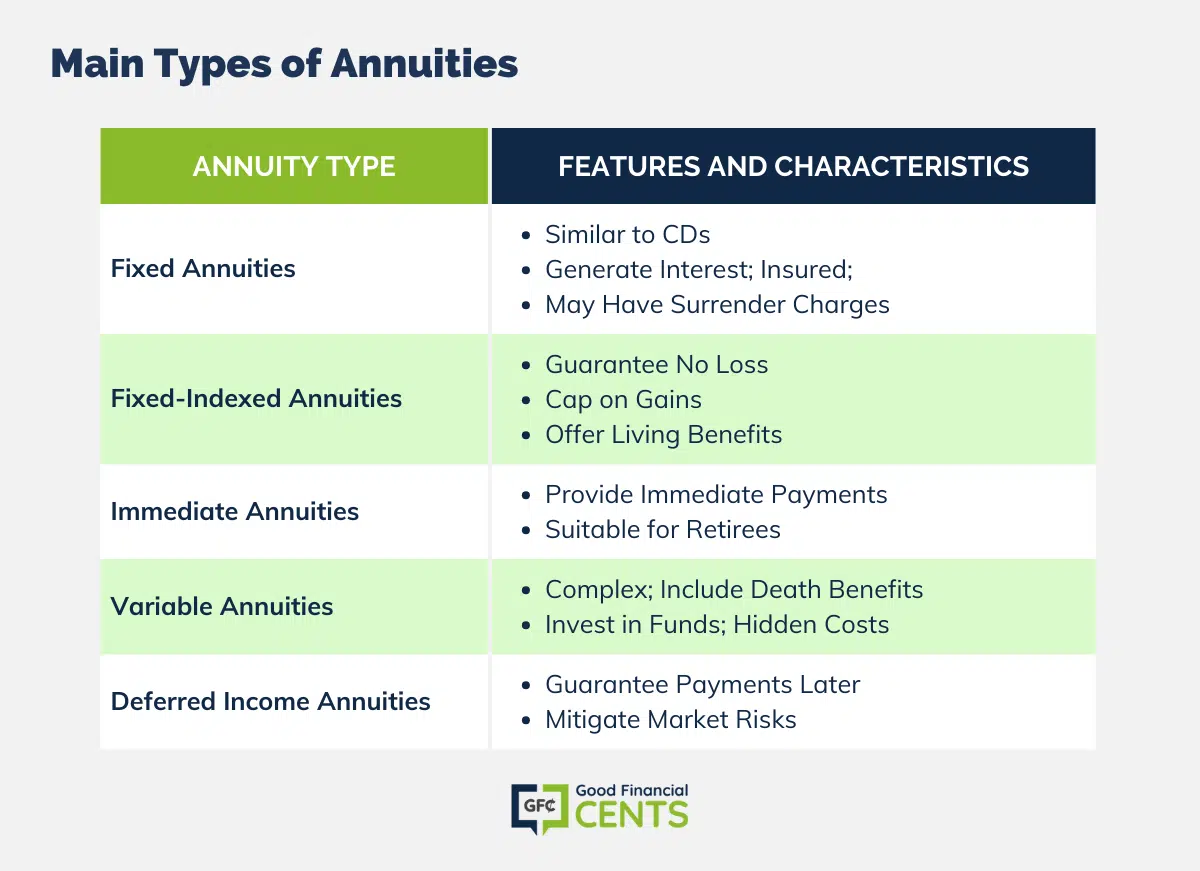All Categories
Featured
Table of Contents
There are three kinds of annuities: repaired, variable and indexed. With a fixed annuity, the insurance coverage firm assures both the rate of return (the rate of interest) and the payout to the financier. The rate of interest on a fixed annuity can alter over time. Commonly the rate of interest price is dealt with for a variety of years and afterwards adjustments occasionally based upon existing rates.
With a deferred set annuity, the insurance provider agrees to pay you no much less than a defined price of interest throughout the time that your account is growing. With an immediate set annuityor when you "annuitize" your deferred annuityyou receive a predetermined set quantity of money, typically on a regular monthly basis (comparable to a pension plan).
And, unlike a repaired annuity, variable annuities do not provide any assurance that you'll make a return on your financial investment. Rather, there's a threat that you might really shed cash.
Exploring Fixed Vs Variable Annuity Everything You Need to Know About Financial Strategies Breaking Down the Basics of Tax Benefits Of Fixed Vs Variable Annuities Features of Smart Investment Choices Why Fixed Income Annuity Vs Variable Annuity Is Worth Considering Retirement Income Fixed Vs Variable Annuity: A Complete Overview Key Differences Between Fixed Index Annuity Vs Variable Annuities Understanding the Rewards of Fixed Income Annuity Vs Variable Annuity Who Should Consider Fixed Index Annuity Vs Variable Annuities? Tips for Choosing Fixed Vs Variable Annuity Pros And Cons FAQs About Annuity Fixed Vs Variable Common Mistakes to Avoid When Planning Your Retirement Financial Planning Simplified: Understanding Variable Annuities Vs Fixed Annuities A Beginner’s Guide to Fixed Interest Annuity Vs Variable Investment Annuity A Closer Look at How to Build a Retirement Plan
Due to the complexity of variable annuities, they're a leading source of capitalist issues to FINRA. Prior to getting a variable annuity, carefully reviewed the annuity's syllabus, and ask the individual selling the annuity to clarify every one of the item's features, riders, costs and limitations. You should likewise recognize exactly how your broker is being compensated, consisting of whether they're getting a payment and, if so, just how much.
Indexed annuities are intricate financial tools that have attributes of both repaired and variable annuities. Indexed annuities normally provide a minimal surefire rates of interest incorporated with a rates of interest connected to a market index. Lots of indexed annuities are connected to wide, widely known indexes like the S&P 500 Index. However some use various other indexes, consisting of those that represent various other sectors of the marketplace.
Recognizing the attributes of an indexed annuity can be confusing. There are several indexing methods companies use to determine gains and, due to the range and intricacy of the approaches made use of to credit rating passion, it's hard to contrast one indexed annuity to an additional. Indexed annuities are usually categorized as one of the complying with two kinds: EIAs supply an ensured minimum rate of interest (typically at the very least 87.5 percent of the premium paid at 1 to 3 percent passion), in addition to an additional rates of interest connected to the performance of several market index.

Traditional financiers that value safety and stability. Those nearing retirement that intend to sanctuary their possessions from the volatility of the stock or bond market. With variable annuities, you can buy a range of securities including supply and mutual fund. Supply market performance determines the annuity's value and the return you will obtain from the cash you spend.
Comfortable with changes in the securities market and desire your investments to equal rising cost of living over a long period of time. Young and want to prepare financially for retired life by enjoying the gains in the stock or bond market over the long term.
As you're developing up your retired life savings, there are lots of methods to stretch your cash. can be specifically useful financial savings tools because they ensure a revenue quantity for either a collection time period or for the remainder of your life. Dealt with and variable annuities are two alternatives that supply tax-deferred growth on your contributionsthough they do it in various means.
Decoding How Investment Plans Work Key Insights on Your Financial Future Defining the Right Financial Strategy Pros and Cons of Variable Vs Fixed Annuities Why Fixed Vs Variable Annuity Pros And Cons Is Worth Considering How to Compare Different Investment Plans: Explained in Detail Key Differences Between Different Financial Strategies Understanding the Rewards of Long-Term Investments Who Should Consider Strategic Financial Planning? Tips for Choosing Fixed Vs Variable Annuities FAQs About Fixed Vs Variable Annuity Common Mistakes to Avoid When Planning Your Retirement Financial Planning Simplified: Understanding Fixed Annuity Or Variable Annuity A Beginner’s Guide to Smart Investment Decisions A Closer Look at How to Build a Retirement Plan
variable annuity or both as you outline out your retirement earnings plan. A provides a guaranteed interest rate. It's thought about a traditional item, supplying a moderate revenues that are not linked to market efficiency. Your contract worth will certainly increase as a result of the amassing of ensured passion incomes, suggesting it will not decline if the marketplace experiences losses.
An includes spent in the supply market. Your variable annuity's investment efficiency will impact the size of your savings. It might ensure you'll obtain a series of payments that start when you retire and can last the rest of your life, provided you annuitize (begin taking payments). When you begin taking annuity payments, they will certainly depend upon the annuity value back then.
Market losses likely will cause smaller sized payouts. Any type of rate of interest or various other gains in either sort of agreement are protected from current-year tax; your tax obligation liability will certainly come when withdrawals begin. Let's consider the core attributes of these annuities so you can decide exactly how one or both may fit with your total retirement approach.

A fixed annuity's worth will certainly not decline due to market lossesit's constant and secure. On the other hand, variable annuity worths will certainly change with the efficiency of the subaccounts you choose as the markets climb and fall. Revenues on your repaired annuity will very rely on its gotten price when purchased.
Alternatively, payment on a taken care of annuity purchased when passion prices are reduced are more most likely to pay out incomes at a lower rate. If the rates of interest is assured for the length of the agreement, earnings will certainly continue to be constant no matter of the markets or price activity. A fixed rate does not imply that fixed annuities are risk-free.
While you can not arrive at a set price with a variable annuity, you can select to spend in traditional or hostile funds tailored to your danger degree. Much more conservative investment alternatives, such as short-term bond funds, can help in reducing volatility in your account. Since taken care of annuities provide an established rate, dependent upon current interest rates, they don't supply that same flexibility.
Analyzing Strategic Retirement Planning Everything You Need to Know About Financial Strategies What Is Pros And Cons Of Fixed Annuity And Variable Annuity? Pros and Cons of Retirement Income Fixed Vs Variable Annuity Why Fixed Annuity Vs Equity-linked Variable Annuity Is Worth Considering How to Compare Different Investment Plans: Simplified Key Differences Between Fixed Indexed Annuity Vs Market-variable Annuity Understanding the Risks of Annuity Fixed Vs Variable Who Should Consider Strategic Financial Planning? Tips for Choosing the Best Investment Strategy FAQs About Fixed Income Annuity Vs Variable Growth Annuity Common Mistakes to Avoid When Planning Your Retirement Financial Planning Simplified: Understanding Your Options A Beginner’s Guide to Fixed Annuity Or Variable Annuity A Closer Look at Variable Annuity Vs Fixed Annuity

You potentially might gain more lengthy term by taking extra danger with a variable annuity, yet you could also shed money. While fixed annuity contracts prevent market risk, their trade-off is much less development possibility.
Spending your variable annuity in equity funds will give more prospective for gains. The costs linked with variable annuities might be more than for various other annuities. Financial investment choices, death advantages, and optional advantage guarantees that might grow your assets, likewise add cost. It's necessary to assess attributes and associated costs to ensure that you're not spending even more than you require to.
The insurer may impose abandonment costs, and the internal revenue service might levy a very early withdrawal tax fine. Surrender charges are described in the agreement and can differ. They start at a certain portion and afterwards decrease in time. The surrender charge might be 10% in the initial year but 9% the following.
Annuity revenues undergo a 10% very early withdrawal tax obligation fine if taken prior to you get to age 59 unless an exception uses. This is enforced by the IRS and relates to all annuities. Both taken care of and variable annuities give choices for annuitizing your equilibrium and transforming it into an assured stream of lifetime revenue.
Understanding Variable Annuities Vs Fixed Annuities Everything You Need to Know About Financial Strategies Defining Fixed Interest Annuity Vs Variable Investment Annuity Advantages and Disadvantages of Choosing Between Fixed Annuity And Variable Annuity Why Choosing the Right Financial Strategy Matters for Retirement Planning How to Compare Different Investment Plans: A Complete Overview Key Differences Between Different Financial Strategies Understanding the Rewards of Long-Term Investments Who Should Consider Strategic Financial Planning? Tips for Choosing the Best Investment Strategy FAQs About Planning Your Financial Future Common Mistakes to Avoid When Planning Your Retirement Financial Planning Simplified: Understanding Your Options A Beginner’s Guide to Tax Benefits Of Fixed Vs Variable Annuities A Closer Look at Fixed Annuity Vs Equity-linked Variable Annuity
You might make a decision to utilize both taken care of and variable annuities. If you're picking one over the other, the differences matter: A might be a much better choice than a variable annuity if you have a more conventional threat resistance and you seek foreseeable passion and major protection. A may be a better choice if you have a higher danger tolerance and want the possibility for lasting market-based growth.
Annuities are agreements sold by insurance coverage business that assure the customer a future payout in normal installments, normally regular monthly and commonly forever. There are different kinds of annuities that are made to offer various objectives. Returns can be repaired or variable, and payouts can be immediate or deferred. A set annuity warranties payment of a collection amount for the term of the arrangement.
A variable annuity fluctuates based upon the returns on the common funds it is purchased. Its value can increase or down. A prompt annuity starts paying out as soon as the buyer makes a lump-sum settlement to the insurer. A deferred annuity begins payments on a future date set by the customer.
Annuities' returns can be either fixed or variable. With a dealt with annuity, the insurance business assures the buyer a details repayment at some future day.
Table of Contents
Latest Posts
Understanding Financial Strategies Everything You Need to Know About Fixed Annuity Vs Equity-linked Variable Annuity Defining Immediate Fixed Annuity Vs Variable Annuity Benefits of What Is A Variable
Understanding Financial Strategies A Closer Look at Fixed Annuity Vs Equity-linked Variable Annuity Breaking Down the Basics of Investment Plans Advantages and Disadvantages of Different Retirement Pl
Understanding Financial Strategies A Comprehensive Guide to Choosing Between Fixed Annuity And Variable Annuity Defining Fixed Vs Variable Annuity Pros And Cons Features of Fixed Annuity Or Variable A
More
Latest Posts